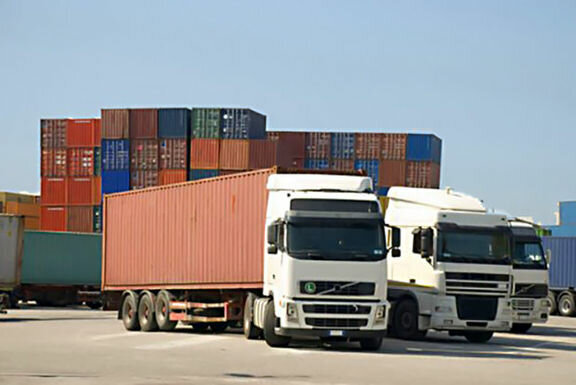Iran’s non-oil export to Afghanistan up 4% in 7 months yr/yr

TEHRAN- The value of Iran’s non-oil export to Afghanistan increased by four percent during the first seven months of the current Iranian calendar year (March 21-October 22), as compared to the same period of time in the past year, the spokesman of the International Relations and Trade Development Committee of Iran's House of Industry, Mining and Trade announced.
Ruhollah Latifi said that Iran exported non-oil commodities worth $975.528 million to its neighbor Afghanistan in the seven-month period of this year.
The economic adviser of the Iranian president’s special envoy in Afghanistan affairs said Iran has a 35 percent share in Afghanistan’s import market, which is a considerable figure in bilateral trade ties.
Mohammad-Mehdi Javanmard-Ghassab stated that Tehran and Kabul enjoy high capacities to expand bilateral trade relations, especially in the fields of technical engineering services, transportation, and transit.
The economies of Iran and Afghanistan can complement each other, he said, adding that the two countries need a long-term strategic plan to take advantage of these conditions optimally.
Turning to Iran’s 35 percent share in Afghanistan's market, Javanmard-Ghasab stressed that the country is seeking to export technology, technical know-how as well as technical and engineering services to Afghanistan.
Increasing the production of Iranian products in Afghanistan is also on the agenda, he emphasized.
According to Mohammad Ghanadzadeh, the deputy head of Iran’s Trade Promotion Organization (TPO), the trade between Iran and Afghanistan has increased by 20 percent in the current Iranian calendar year (started on March 21).
Ghanadzadeh said Iran is ready to cooperate with Afghanistan in the country’s development and reconstruction projects.
Noting that Iran is Afghanistan’s top trade partner, the official put the two country’s trade in the previous Iranian calendar year at $970 million.
He said Iran and Afghanistan have previously had an annual trade of $3.0 billion, but Afghanistan's political instability, the lack of infrastructure at border crossings, and the unpreparedness of customs have hindered the development of trade between the two countries.
Stating that TPO is pursuing the signing of a preferential trade agreement with Afghanistan, the official said the negotiations in this regard are moving forward and the lists of the desired goods of the two countries, especially in the agricultural sector, have been exchanged for further investigation.
Iran and Afghanistan, two neighbors with many commonalities, believe that the current level of their mutual economic and trade ties is not satisfactory, and they should pursue the development of these ties more seriously.
In this regard, the Iranian and Afghan governments are taking some prominent measures to boost trade between the two countries.
In early March, Iran’s trade center and permanent exhibition of Iranian products was inaugurated in Kabul.
In a tweet, the Iranian Embassy in Afghanistan mentioned the purpose of opening this center is to take a fundamental step in the development of trade relations between the two countries of Iran and Afghanistan.
Then in late July, a joint exhibition of products made in Iran and Afghanistan kicked off in Afghanistan’s western city of Herat.
Over 20 major Iranian and Afghan producers showcased their products and services in 22 booths during the four-day exhibition.
The opening ceremony of the exhibition was attended by officials from both sides, including the organizer of the exhibition Ali Khaksar, Iran's Consul General in Herat Mohammad Sediqifar, and Deputy Head of Herat Chamber of Commerce and Industry Ahmad Saeed Sideqi.
In late June, during the visit of the head of the Iranian Trade Promotion Organization (TPO)’s Afghan desk to Afghanistan, important agreements were made for the development of trade relations between the two countries.
Hamidreza Karbalaie Esmaili’s visit to Afghanistan was aimed at improving trade relations between the two neighbors in the fields of technical and engineering services, pharmaceuticals and medical equipment, petrochemical products, food industry, etc.
The most recent important measure taken by the two neighbors in line with developing trade ties was signing five memorandums of understanding (MOUs) on cooperation in different economic sectors.
The MOUs were signed in a ceremony on November 9 in the presence of Iranian Agriculture Minister Mohammad-Ali Nikbakht, President Raisi’s special envoy for Afghanistan Hassan Kazemi Qomi, and Deputy Prime Minister for Economic Affairs of the Taliban Government Mullah Abdul Ghani Baradar.
The mentioned MOUs include the cooperation document of the Iran-Afghanistan Joint Economic Committee meeting, the document of the two sides’ Joint International Road Transport Cooperation Committee meeting, the MOU between Iran’s Civil Aviation Organization (CAO) and the Afghan side, the MOU between Iran’s Esfahan Steel Company and the Afghan side, and the MOU between Iran’s Secretariat of Free Trade and Special Economic Zones and the Afghan sides.
Afghanistan’s delegation arrived in Iran on November 4. The 30-member delegation was led by Mullah Abdul Ghani Baradar.
In the same day, Iran’s capital Tehran hosted an Iran-Afghanistan Joint Economic Committee meeting for the first time after the new government in Afghanistan took office.
Also, Iranian Transport and Urban Development Minister Mehrdad Bazrpash hosted a meeting with Afghanistan’s Acting Minister of Transport and Civil Aviation Hamidullah Akhundzada in which the two sides discussed ways of developing transport ties.
MA
